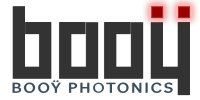Emerging research suggests that red light therapy (660-850nm) may help protect retinal cells, reduce eye strain, and improve vision in age-related conditions. Red and near-infrared light have been studied for their ability to enhance mitochondrial function in retinal cells and slow degeneration.
Key Findings from Multiple Studies:
- A 2020 study found that exposure to 670nm red light improved retinal function and contrast sensitivity in older adults.
- A 2021 trial showed that daily exposure to near-infrared light reduced age-related vision decline and enhanced eye cell metabolism.
- A 2022 review suggested that red light therapy may protect against retinal diseases like macular degeneration and glaucoma by reducing oxidative stress.
- Research indicates that RLT may help counteract blue light damage from screens, potentially reducing digital eye strain.
Implications:
These findings suggest that red light therapy between 660-850nm may support retinal health, reduce eye strain, and slow age-related vision decline. Regular use may help protect vision and improve eye function over time.
